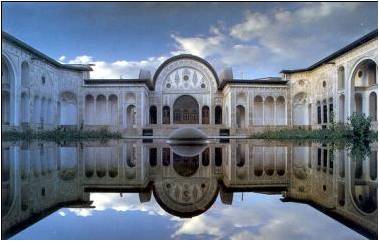
- According to the inscription existing in the Shahneshin of this mansion, it’s construction dates back to 1774 (1298 AH).
- The mansion comprises two distinct section, which in fact constitute independent yet judiciously connected houses.
- The larger section has a rectangular courtyard at the corners of which small spaces exist.
- Amid the southern front of the courtyard, slightly recessed from its edge, stands a columned eivan facing a rectangular pool.
- The southern front constitutes the most important spatial ensemble of the mansion it is taller than the other parts and is crowned by a semi-circular arc which constitutes the highest point of the building’s skyline.
- Amid the façade of the northern front stands a relatively large Mahtabi, which adds its space to that of the courtyard.
- Two small columned eivans flank this front. The Mahtabi is linked on the rear to the corridor of the other house and has two entrance Hashtis, one of which gives access to the latter, so that the Mahtabi may be viewed as the articulation of the edifice.
- Likewise the eastern front embodies an ensemble comprising a reception hall and four Seh-dari rooms, all aligned and connected to each other. The hall at the center of this front is cross shaped and two small columned eivans stand in front of the Seh-dari rooms which flank it. Another feature of this front is the alternate disposition of small and large arcs.
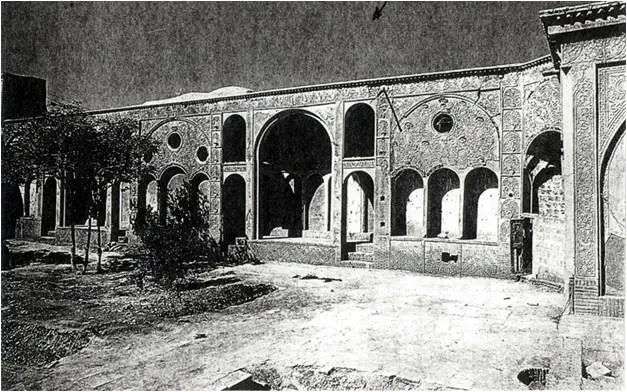
- On the western side of the courtyard only two small columned eivans occupy the central part of the wall, somehow repeating the opposite façade.
- A symmetry of opposing facades is generally visible in every detail of this building.
- The inner facades surrounding the courtyard are facade with very fine stucco carvings.
- The main entrance of the mansion is situated on its southern corner and combines several consecutive spaces linking the entrance arch to the courtyard.
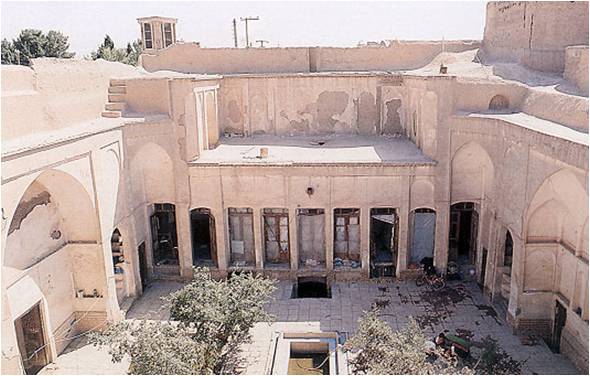
- The second, smaller and conspicuously more private, part of the mansion comprises a small courtyard on the northern and southern fronts of which only Colonnades or small eivans have been built.
- On the eastern side stands a Panj-dari room flanked by two attending rooms. On the roof of this Panj-dari room an elongated Mahtabi with ornamented wall facing occupies most of the façade of this front.
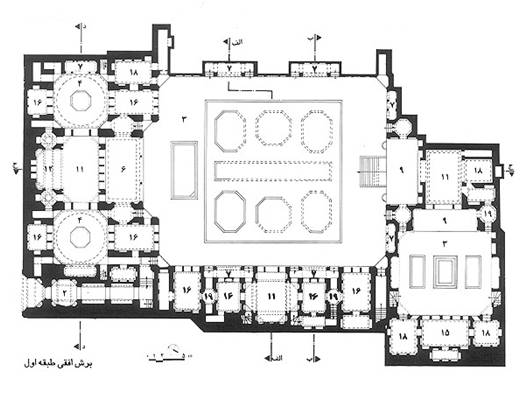
GROUND FLOOR PLAN
BAAD GIR
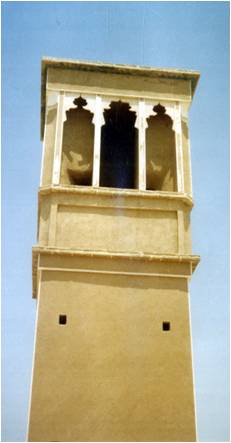
- “Baad gir” is the fixed combination that act like wind eaters and has exist gate also.
- A vertical channel (passage way) is opened from top in four sides.
- (Sometimes in two sides); and a couple small divider walls which are placed diagonally and crossing each other are placed till the lowest part of “Baad gir”.
- The upper part of that is opened from four sides, and has ability to get the breeze from any direction and send the cool wind inside room.
- And it can also act on a chimney the opening of “Baad gir” is in such manner that absorbs the wind inside and it has very important rule, it means that the pleasant wind in contact with the curved shape opening pulls down.
EIVAN
- Eivan” at the summer sit out of the house is formatting a semi open space, that were used to use the summers when was going up on the walls.
- They used to take the level of the eivan 2 or 3 steps higher than the level of the court yard, in the manner that it was dominating the court yard.
- Eivan and taller look to the north east to avoid the heat of the afternoon sun.
MATERIALS
- There are decades that in the hot aria climatic cities. There is use of mud and brick as a main construction materials.
- They used to add salt to the water of mud mixture to ensure that the rain or snow doesn’t leak inside.
- The salty mud would work as an water proof material and it won’t let water to get frozen in a temperature less than zero.
DOOM AND VAULTED ROOF STRUCTURE
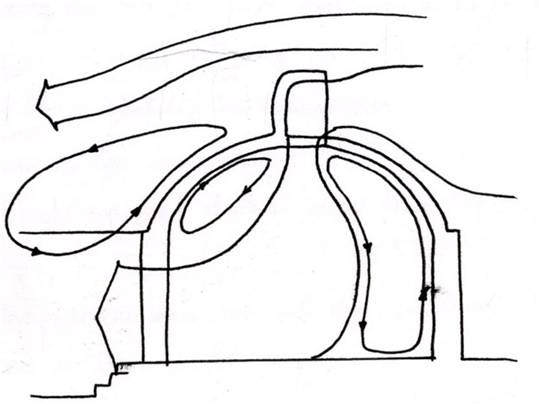
- Because of the dome character of the dome roofs, they are always in front of wind.
- This effect the reduction of heat on roof that it gains from the sun, at night also in the same way the roof will reflect sun heat faster.
- On the dome shaped roofs, because the sun shine is not in same level and all parts of the roof (point 3 receives less than point a) and this effects the deduction of temperature under the dome, specially when the dome has legs also.
- The light catchers on top of the dome roofs were act as a air absorbers and light receivers with the help of them the heat that has come from the inner dome at a day time will be left out at the night.

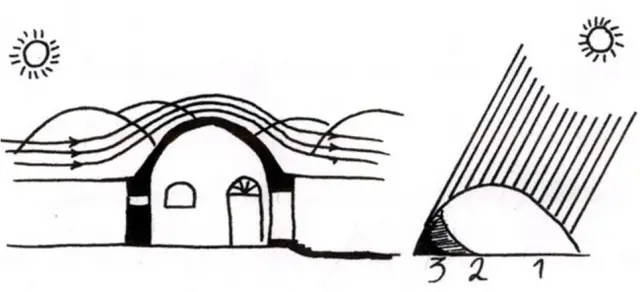
Domed roof shape responsive to climatic factors.
DESIGN STRATEGIES OF HOUSES
- The orientation of the house in hot and dry climates has to be in such a manner to avoid the sun heat in summer afternoons. If the house has to be in one direction, the best direction is 25 in east and it can vary to 35 south-east.
- Keeping in mind the most important elements like “Eivan” (the semi open space) which is very useful in the hot summers of hot cities, and also a small interior space which is very cool and it can act as a basement in ground floor level. The orientation of these spaces in the house in respect of sun direction is very important.
- The flexibility of the interior parts of the house if not interrupting the main principles of the design is considerable.
- The materials which are used in the house have to be limited and in range.
- Making the surface of the external walls on evian (for examples potting the bricks in front and behind), to create the shaded holes, which decrease the sun heat on the walls on western direction.
- The best place to plant the vegetation in the courtyard, and front of the rooms. Therefore, the sun heat is getting absorbed and planting will prevent the reflection of the sun which goes inside the room, and the low speed air movement with the branches of trees make the courtyard cooler.
- The most balanced heat temperature of the interior parts is achieved when the internal wall of daily used is made of heavy materials and the rooms which are used at nights (sleeping spaces) is made of light materials.
- One of the reson, to make double height ceiling is the temperature variation, because of the hot air tends to move up, therefore, we can make height ceiling to some extend.
- In the design system of the building we have to try to make decreases the outer surfaces from the sun direction.
Climate of Kashan is hot and dry
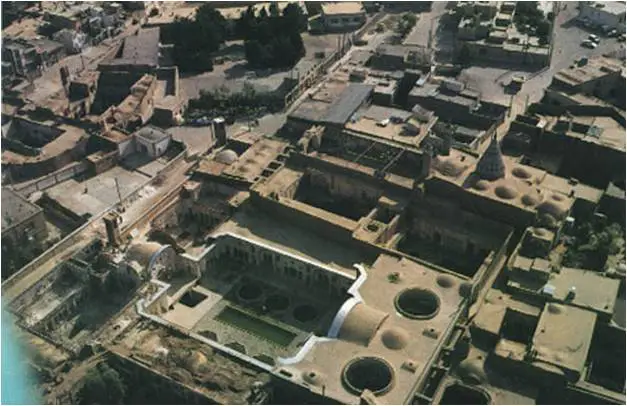
In Summer maximum 45C and in Winder maximum 16C
- This climate are characterized by a large diurnal temperature variation, low humidity, clear skies, intense solar radiation, dusty winds and high air temperatures during day time. The hot dry season is predominate and from the building designers point of view. It is the critical season.
- KASHAN is an example of region that have history of energy conscious, solar architecture. The winds are usually coming from “KARKAS” mountain at the north-east of the Kashan, and that has made the builders to make a tall “BAADGIRS” on four sides of the house.
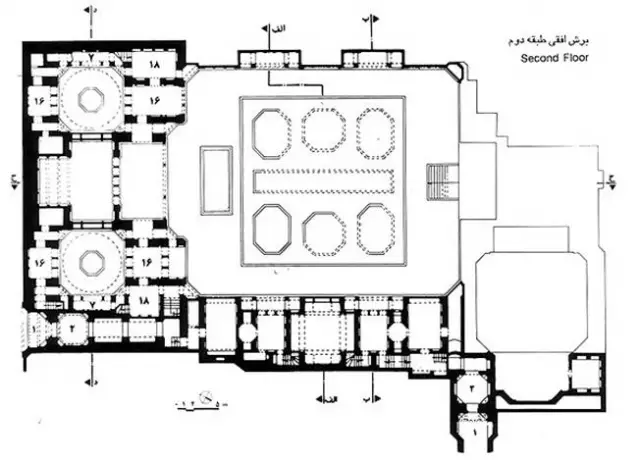
FIRST FLOOR PLAN
ZONING
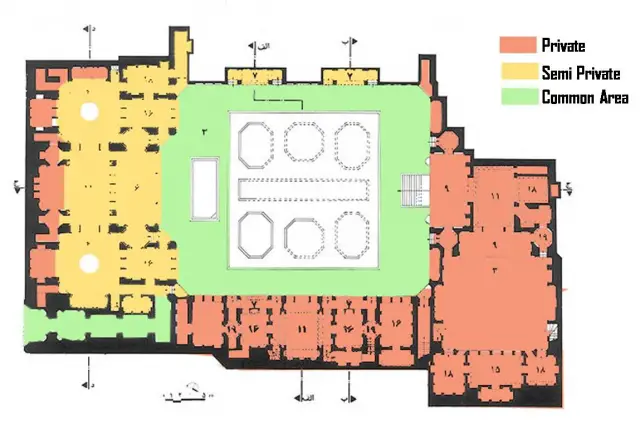
INTERIOR VIEWS

MORE VIEWS
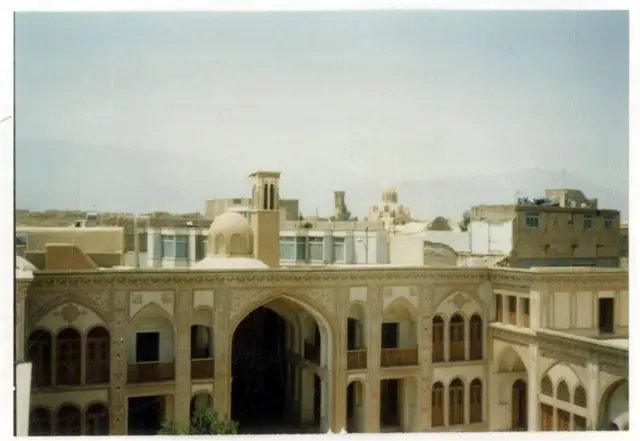

Leave a Reply
You must be logged in to post a comment.